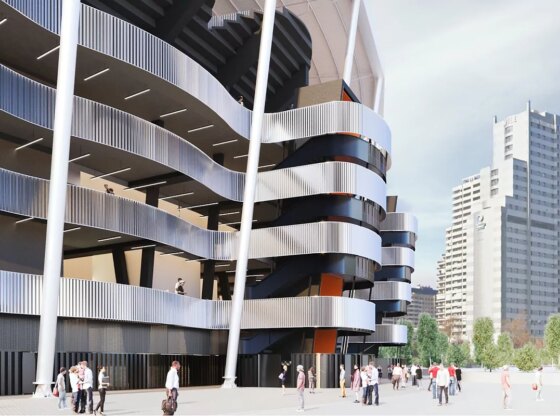The economic health of Valencia CF It remains delicate, but appears to have stabilized after years of losses and hard adjustments. The board of directors will present on December 17 to the shareholders in general meeting some accounts that you have closed with a benefit of 2.2 million euros before taxes. It is the second year in a row that there are no losses.
While profits are an indicator of economic stabilization, it is the debt restructuring and the activation of works of the Nou Mestalla what drives balance sheets. In the last five years, the club has reduced its negative working capital to 20 million compared to 74.5 million last year. That means the ability to, as he described Ron Gourlay a few months ago, to be able to go to the next markets in order to strengthen the sports field. He already did it last summer, with a loan of 30 million that was invested in hiring players.
Although the operating result has grown by 7.8 million, going from 16 million to 23.8 million, the team’s results continue to translate into income. The turnover decreased by 3.2 million euros due to the reduction in income from television rights by falling in the classification the last two years, to which is added the payment for the CVC loan. Sustaining the decline is the competition game, which grows by 2.3 million thanks to the sale of tickets on the day of the match after limiting the number of subscribers. Those don’t fail either, and the figure for income from subscriptions rises slightly from 16.2 to 16.8 million. Another two million increases the amount of marketing, advertising and sponsorship: from 16.4 to 18 million euros.
Regarding expenses, they have increased to 114.5 million, among other issues, due to the dismissal of Ruben Barajawhich caused an increase in staff costs.
There is also an increase in the financial cost of debt. Compared to 17.5 million, it rises to 22.4. The reason the club explains is the cancellation costs and the adjustments that long-term refinancing has forced. According to the accounts that the entity will present, the total debt of the club has grown from 300 to 382 million, although now it has to face 302 million in the long term, which is a relief. Against this debt, the club has increased the value of its assets: in the short term, more treasury (31 million), and in the long term, the works at the Nou Mestalla, which increase their value by 47.5 million.
Resuming the work has allowed a reversal of the deterioration that the new stadium had suffered, the loss of value that, in the case of the land, means adding two million more and 14 in the case of the value of the building.
The key to financing
The operation signed through Goldman Sachs to reactivate the works on the Avenida de las Cortes site after 15 years has been the most important carried out in the year. The club explains to its shareholders that the repayment of the loan to the securitization fund established will be covered by the “future income from the new stadium” with “full solvency.” The forecast with which they work is that income “will multiply by three.”
This securitization fund has been established with the issuance of bonds for an amount of 237 million euros for 28 years (three years grace period and a fixed rate of 5.82%) and a credit contract for 85 million euros for 5 years (variable rate of Euribor +3.5%, although the first two years, during construction, the rate is fixed at 5.545%). Of this credit, until June 30, 2025, only 21.2 million euros had been drawn down.
Through this fund, Valencia details that it will allocate part of the amount earned from the sale of the Nou Mestalla tertiary to possible contingencies in the construction of the stadium. Likewise, part of the income obtained from the sale of Mestalla will be used to repay debt.
Now, if the exploitation forecasts fail, the securitization fund has as guarantees to collect: a mortgage on the Nou Mestalla, the club’s rights to the operating income of the stadiums, part of the tertiary funds sold to Atitlan, and the possible income paid by insurance for delays in construction.
The club already had the television rights pledged to face CVC and the loans of Peter Limwhich also has the first five million from the sale of players, and the Ciudad Deportiva de Paterna with Haciencia, for claims regarding personal income tax.
Budget without sales
At its general meeting of shareholders on December 17, Valencia will present a budget of 102.17 million for the 2025/26 season that it adjusts, for the first time, without considering player sales.
It is true that in “events after closing”, it contemplates the sale for 25.4 million Flycatcher y Yarekand also the purchase of Ugrinic and Copete for 6.9 million. The cost of the workforce grows to 86 million.
But what fits the budget without forced sales is the accounting of the income that, through the tertiary, would pay Atitlan: 37 million euros. Valencia can reflect them for two reasons: because it notified the League of the operation so that it could increase its fairplay this summer and because it has deposited almost 12 million of the cost of the project in the treasury of the Valencia City Council. polideportivo of Benicalap, a commitment that had to be fulfilled.

